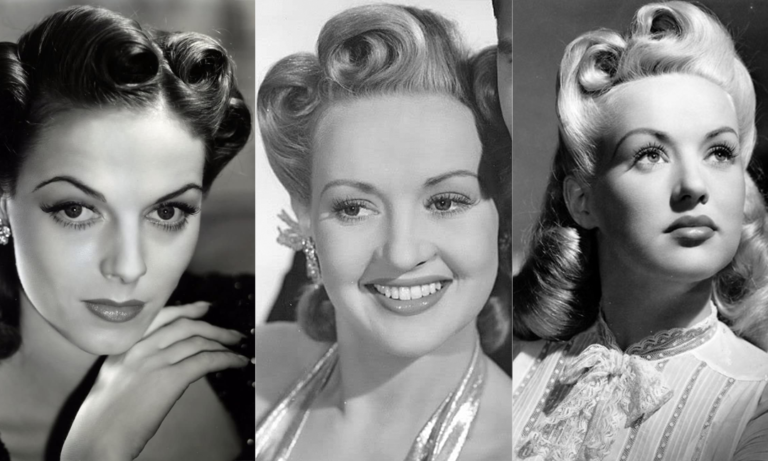
Victory … and other words for morale
The word “Victory” was a very popular word for morale during WWII. Winning a battle, winning the war, and winning the chance to see your loved ones again all fell under the category of Victory. So governments and media used the word… A LOT. It appeared in propaganda, in news headlines, and in advertisements in women’s magazines for everything from hairpins to hairstyles.
This blog post is from a 2-part series about WWII hairstyles. Read the first post Victory Bobs and V Modes here.
Table of Contents (Click to jump)
- The First Victory Rolls
- Victory Rolls for Dinner
- The Roll Hairstyle with No Name
- Victory Rolls Tutorial
- Betty Grable’s Iconic Rolls
- Victory Rolls aren’t What We Might Think?
- Victory Roll Hairstyle Mystery Solved
The First Victory Roll
The first use of the term “victory roll” was by fighter pilots. It was a spin maneuver they might do after a successful mission. Essentially it was a victory dance for a fighter pilot.
The specific aileron maneuver is described as “flying low and fast, pulling up slightly to avoid descending when inverted, then applying full aileron until upright again.” courtesy of Royal Air Force Pilot BEagle on PPRune.com.
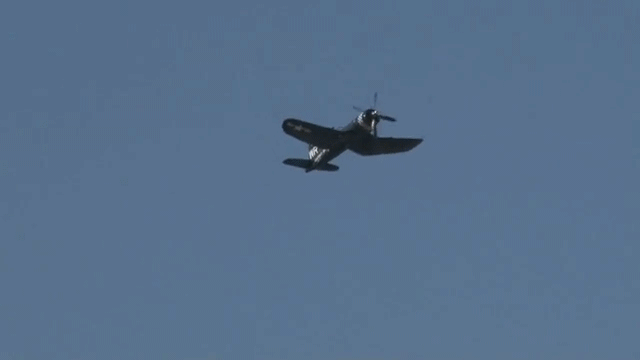




Victory Rolls as part of your dinner
Don’t forget Victory Rolls at the dinner table! Food was not to be outshined in this environment of propaganda. The dinner you cooked from the food you grew in your victory garden was all considered part of your efforts at home while the boys were fighting abroad.
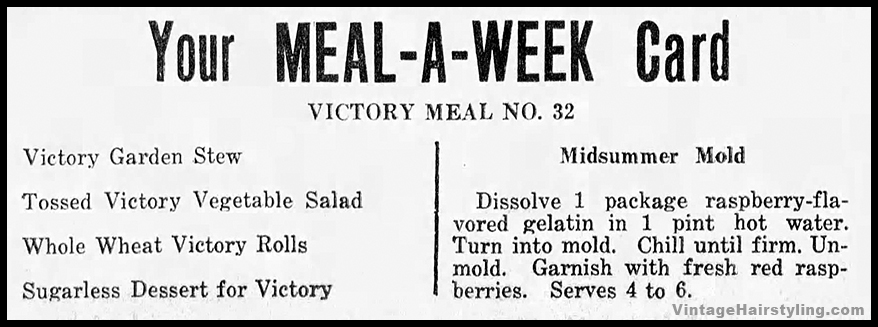




This recipe for victory rolls describes prepping the rolls almost like a swiss roll that you cut into sections before you bake.

But this isn’t a baking blog…
The hairstyle that didn’t have a name… yet
The roll hairstyle element we now call Victory Rolls started before the war broke out, but it didn’t have a name yet. Hair magazines from the late 1930s had examples of the sausage shaped rolls styled above the ears with an open curl facing forward.
These late 1930s hairstyles often had smaller and more numerous amounts of these long roll shapes.
These long form curls were styled the same way we style a victory roll today. The strand forming the curl is pulled out and back combed on the inside of the strand. Next, the curl is brushed lightly over the fingers. Finally, the curl is spread flat with thumbs and fingers and placed in the desired position.

You might also like: The Roll & Go Hair Tool for fast, easy victory roll styling
Video tutorial for easy Victory Rolls
Using the Roll & Go Hair Tool, I created this simple Victory Rolls Hairstyle. Get your tool today for fast, easy Victory Rolls!
The Victory Roll Hairstyle
As we know it today, the Victory Roll hairstyle is a number of open front rolls, usually 2 or 3, styled to sit above the ears and eyes. The hairstyle is both graphic and feminine and an unmistakable representation of a 1940s hairstyle.
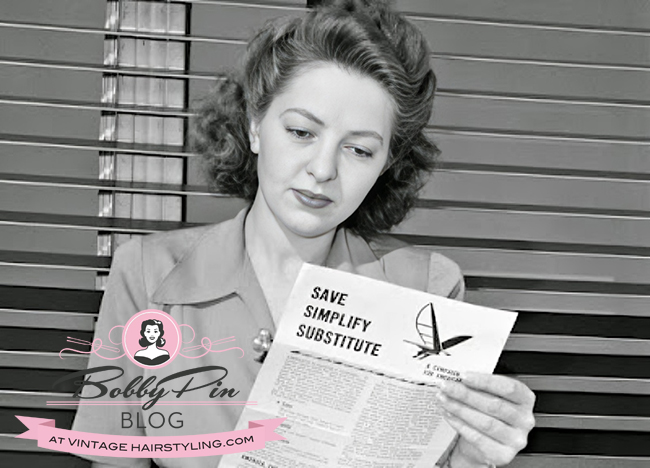
WWII Pinup Betty Grable
Betty Grable, a famous pinup during WWII, wore what we today call a Victory Roll hairstyle prominently in the 1941 movie Moon Over Miami.




You will see Betty Grable wearing this famous hairstyle in publicity images for the film noir classic I Wake Up Screaming with Victor Mature, but these images were taken while she was either doing hair tests or filming Moon Over Miami, so she’s wearing a hairstyle from a different movie!
What if a Victory Roll is actually something different than we thought?
After setting out to find proof of the use of the words victory roll in a hairstyle in the 1940s, I am finding other proof that this hairstyle might have been something different than the top rolls we think of today.
Asking YouTube watchers to send me any proof they had of the words victory rolls used together to describe a hairstyle, one audience member sent me this advertisement for a hair salon in Seattle from 1942. And it is plain as day, VICTORY ROLLS!!! …
But then I started to read into the advertisement and it seems to describe something other than top rolls.
The ad describes victory rolls as a hairstyle appropriate for military uniforms. Military uniform hairstyles’ key restriction was that the hairstyle be contained and neat and above the collar. So were Victory Rolls actually the V-shaped back roll like the one I described in my blog post about Victory Bobs and V Modes? The hairstyle I describe (shown below) was designed to be worn with a uniform.
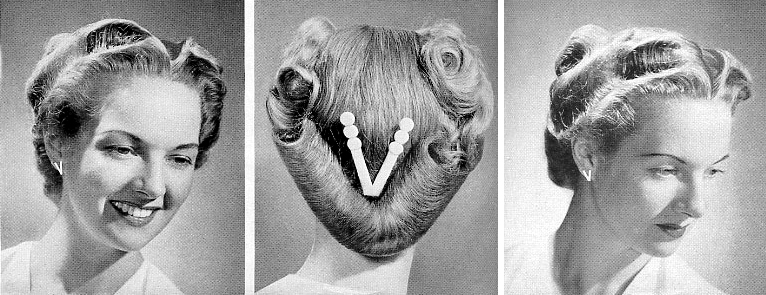
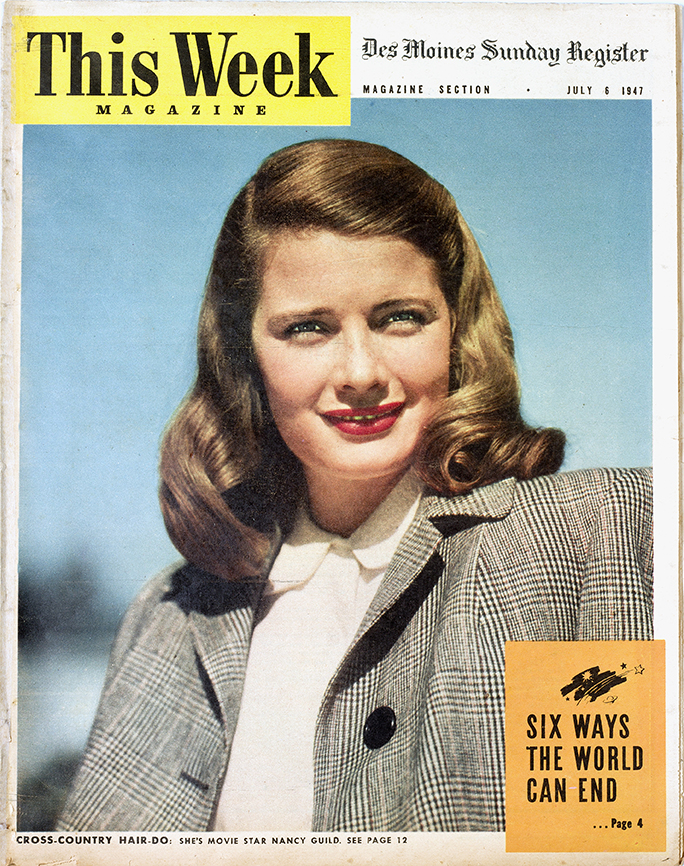
You might also like: Post WWII Hairstyle Looks
So I dug a little more…
In a continued search for the words “victory roll” in a hair advertisement, I came across this ad for a wig and hair switch company.
In the list of hair additions you can buy from the company are:
- All Around Rolls (the continuous roll I assume)
- Victory Rolls
- Chignons
- Braids
Yes, they could be referring to a hair piece roll that you pin to the top of your head, but, since it is within a list of other hair switches women generally pinned around the back and behind the ears, I am still led to believe that the victory roll might be a hairstyle element at the back of the head, not on the top.
Victory Roll Mystery Solved!
After a long research process, I think I can confidently say that the mystery of the original Victory Roll has been solved… or clarified… or now I just know something that I didn’t know before.
This article (below) from The Weekly Times of Melbourne, 1943, gives us a detailed description and photos of… cue trumpets… the Victory Roll hairstyle. Thanks to a reader in Australia, we now have detailed info on the famous hairstyle.
“The Victory Roll,” it reads, “has three stages. It begins life very short and curly. It grows into a long halo roll, and it ends as a soft turned-in curl round the nape of your neck.”
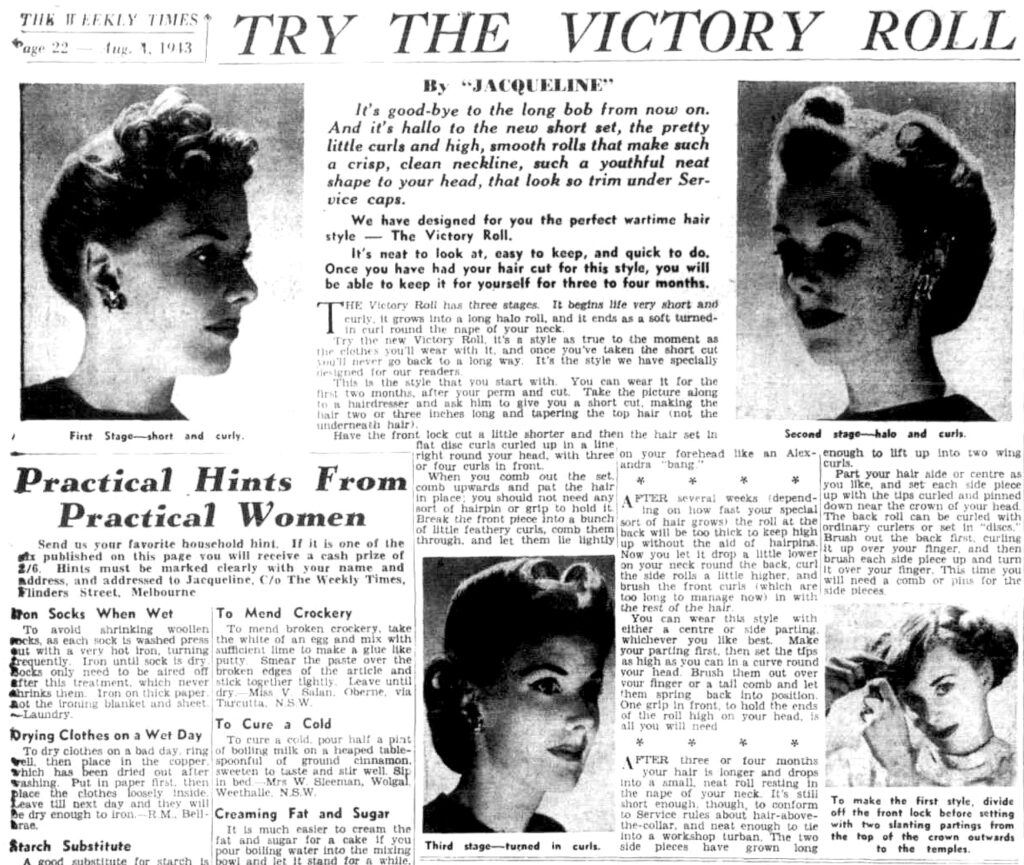
This small clip (below) from 1941 also clears up that the hairstyle does start at the back at the nape of the neck, but also ends with rolls up near the forehead. It reads:
“A new hair style inspired by the V for Victory campaign is sweeping London at present. This hair do called ‘Victory Roll’, with a smart upward movement, sweeps the hair from a centre parting into two inward rolls, beginning at the nape of the neck, and ending on either side of the forehead.”
So yes! We can call all of these hairstyles Victory Rolls! Whether it is a V at the back or rolls at the top or both!
Sources
- Newspapers.com
- IMDB.com
- PPrune.com
- Zinger Aviation Media
- Modern Beauty Shop Magazine
- American Hairdresser Magazine
- trove.nla.gov.au
Related posts
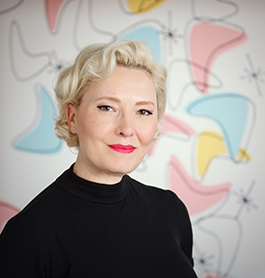
Welcome to the Bobby Pin Blog! I am Lauren Rennells and as a hairstylist, makeup artist, writer, and generally artistic over-achiever, the Bobby Pin Blog is my outlet for thoughts and research about vintage hair and makeup trends and how to recreate them today. Thank you for stopping by!
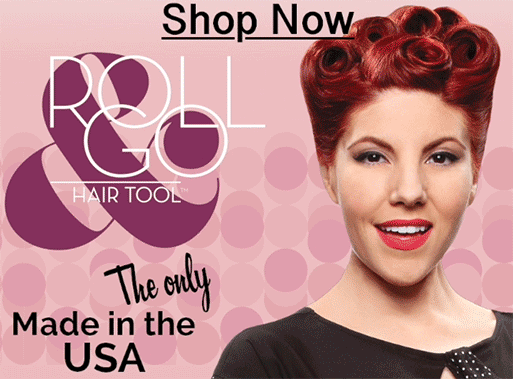
As an Etsy and Amazon associate I earn from qualifying purchases. As an independent blogger, I link these items because of my own opinions and not because of the commission I may receive.
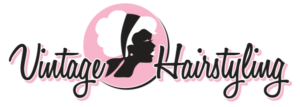
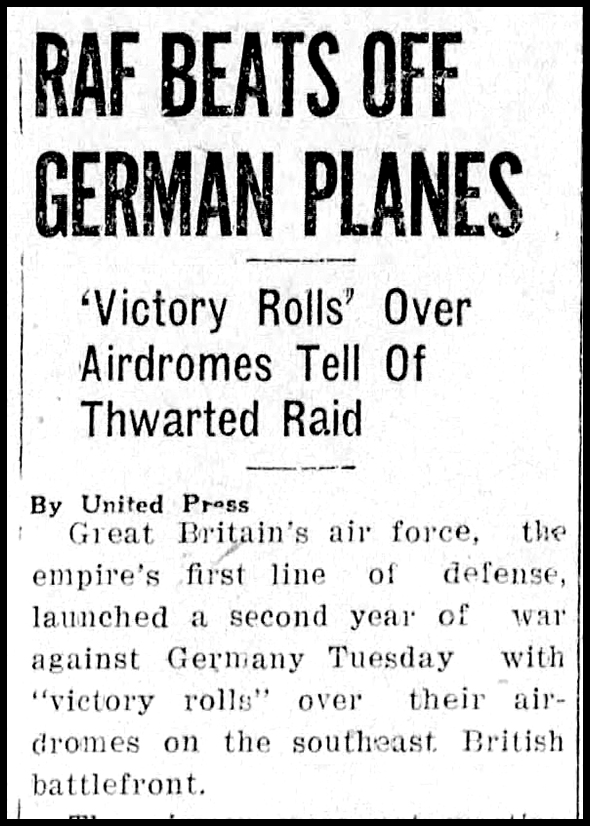
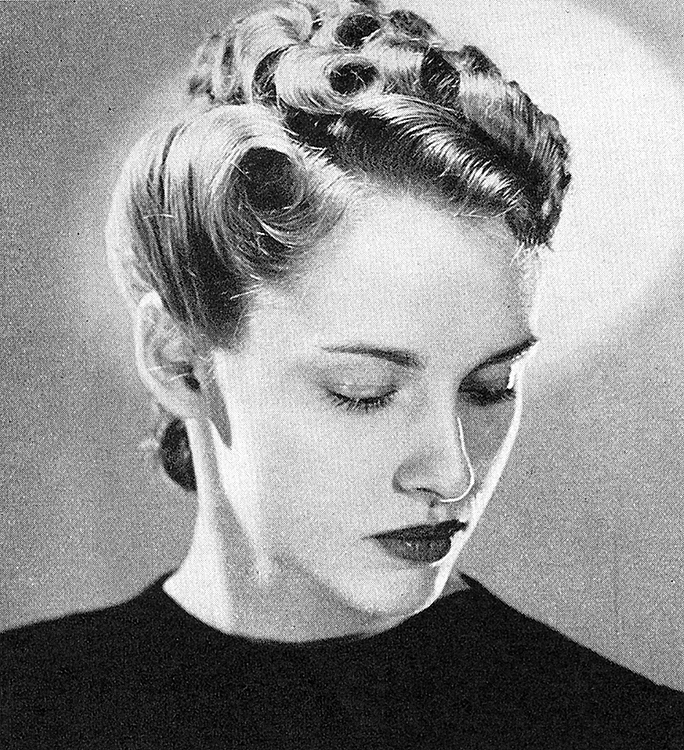
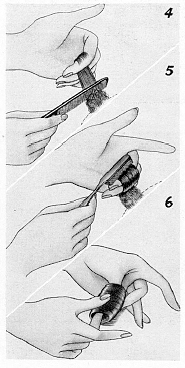
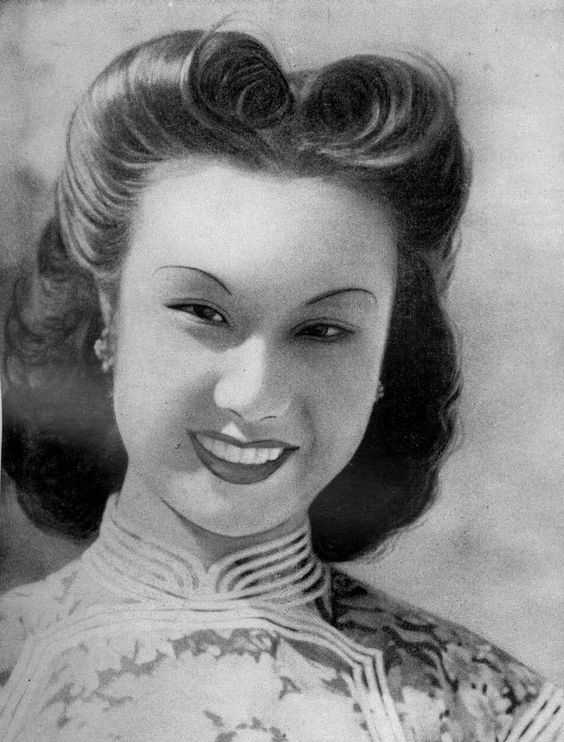
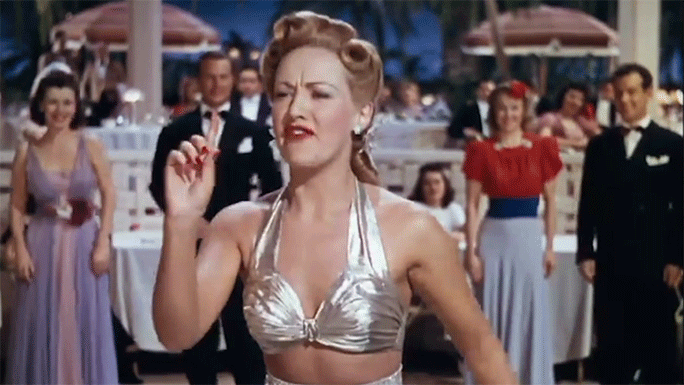
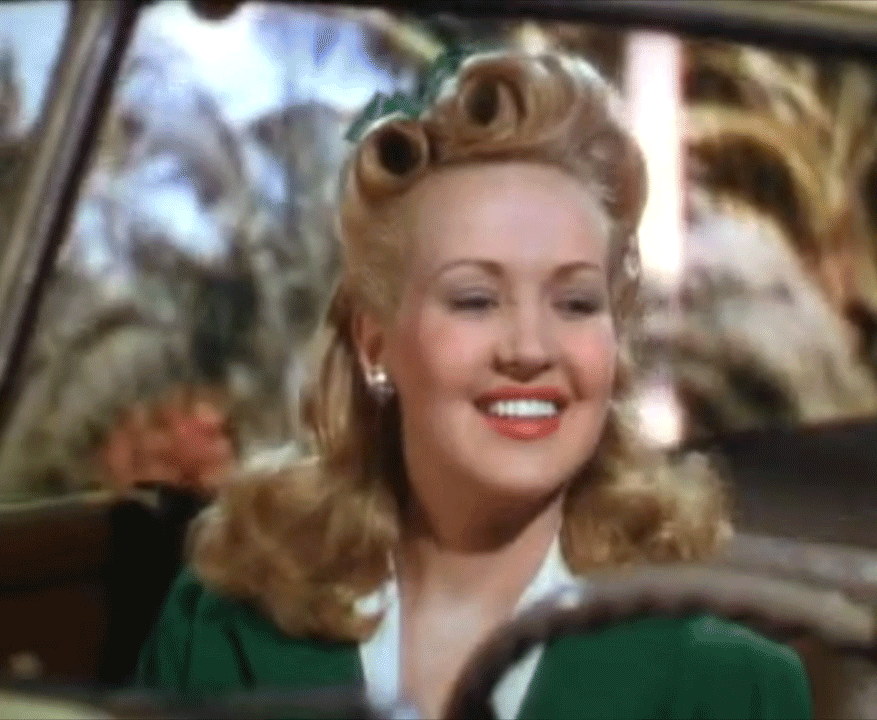
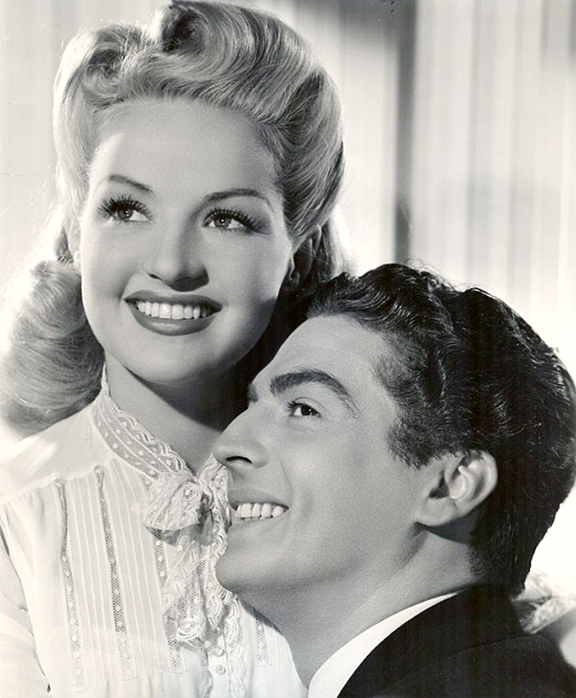
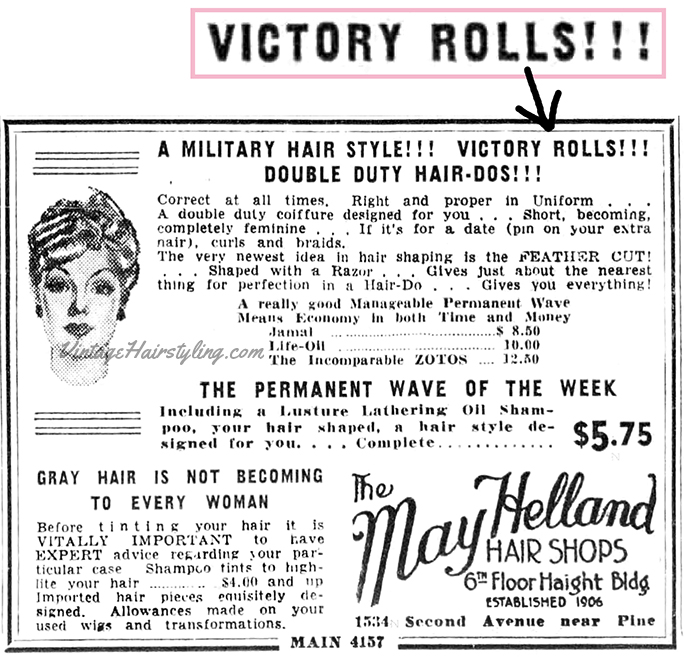
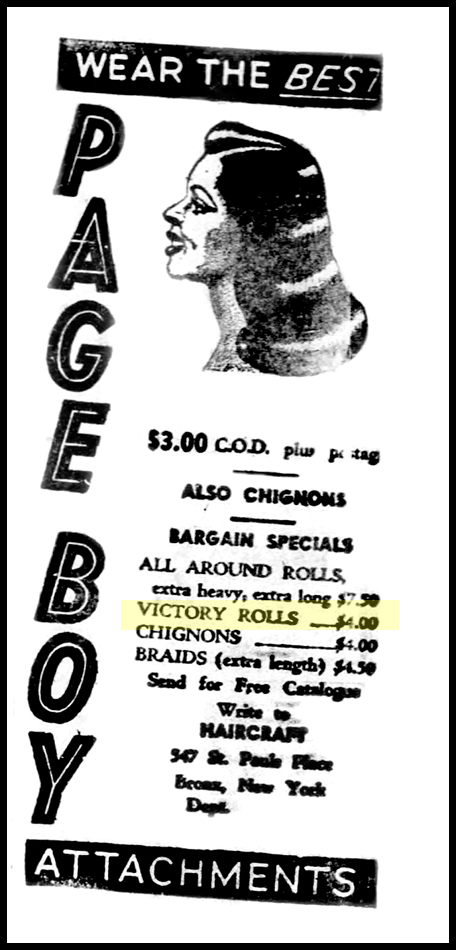
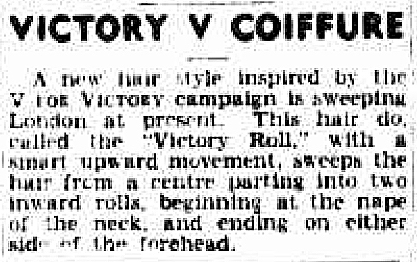
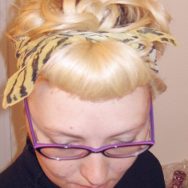
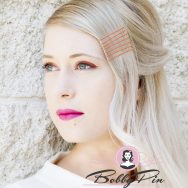
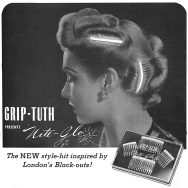

8 Comments
Wink
Thank you for digging so deeply into this! It’s a topic that Woody and I have spent an odd amount of time talking about, as well as poring through my not-small collection of period yearbooks looking for hairstyles as worn by the masses instead of Hollywood stars. I wish I had anything to send your way that would help shed more light and I look forward to seeing what others can add to the knowledge bank.
LaurenR
Wink. Check out the links in the other comments here. xo
Ron Fairfield
Interesting.
I have another take on it.
When women starting working during the war l, in factories etc carrying out the work that was traditionally done by men they would pin curl their hair placing it under a head scarf during the day to be dressed out later, to avoid just covering the hair completely they left out the “victory rolls” at the sides and front to create the look that has become a style.
I think the truth is probably a mix of all of your, and mine, observations and research.
I trained back in the 60’s in a traditional salon using rollers pincurls and iron waving, and whilst I am still styling modern hair after 54 years I still miss those styles that I refer to as “real hairdressing”.
Your blog is great
Ron Fairfield
LaurenR
Thank you Ron!
Kate
I have found in the Australian newspaper archives, news of the “Victory Roll” hairstyle arrived “from London” on 1 August 1941, reported by both The Argus (Melbourne) and the Daily Telegraph (Sydney) and filtering into other papers over the next few months.
“A new hairstyle inspired by the V for Victory campaign is sweeping London at present. This hair style called the “Victory Roll” with a smart upward movement sweeps the hair from a centre parting into two inward rolls, beginning at the nape of the neck and ending on either side of the forehead.”
This sounds to me like the continuous roll was considered an essential element in the earliest version to make it here!
https://trove.nla.gov.au/newspaper/article/8195553?searchTerm=%22victory%20roll%22%20hair
Kate
By 1943, this version also seems to emphasise the “halo” as well. https://trove.nla.gov.au/newspaper/article/225428024?searchTerm=%22victory%20roll%22%20hair
LaurenR
Thank you for this!
LaurenR
This does sound a lot like a continuous roll that rolls into the shape we call Victory Rolls today. Thanks!